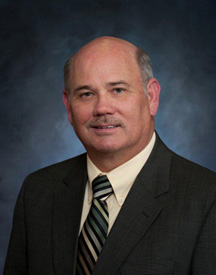April 17, 2020 | Austin, Texas
Governor Greg Abbott held a press conference Friday, April 17 and issued three new Executive Orders to begin the process of reopening the state of Texas while revising hospital capacity and certain social distancing guidelines. Within the orders, select activities and services that pose minimal to no threat of spreading COVID-19 are allowed to reopen using a “Retail-To-Go” model, certain restrictions on surgeries have been loosened, and schools will remain closed for the remainder of the 2019-2020 academic year.
Within these orders, the governor has established the Strike Force to Open Texas—a team of nationally recognized medical experts and private and public leaders who will advise the governor on safely and strategically reopening the state of Texas.
“Texans are battling a colossal challenge—an invisible enemy that has tested our lives and our livelihoods—but overcoming challenges is part of who we are as Texans,” said Governor Abbott. “We have shown that Texas can continue our efforts to contain COVID-19 while also adopting safe standards that will allow us to begin the process of reopening Texas. The Strike Force to Open Texas brings together nationally recognized medical experts with public and private sector leaders to achieve this mission. By coming together, we can get Texans back to work, practice safe standards that will prevent the spread of COVID-19, and we can overcome this pandemic.”
James Huffines will lead the advisory strike force and Mike Toomey will serve as Chief Operating Officer. Lt. Gov. Dan Patrick, House Speaker Dennis Bonnen, Atty. Gen. Ken Paxton, and Comptroller Glenn Hegar will serve as consulting members.
In addition, Governor Abbott has appointed Texas Department of State Health Services Commissioner John Hellerstedt, MD, as Chief Medical Officer of the strike force. Dr. Hellerstedt will be supported by three
Chief Medical Advisors:
John Zerwas, MD, Executive Vice-Chancellor for Health Affairs at the University of Texas System
Mark McClellan, MD, PhD, Former Food and Drug Administration Commissioner and U.S. Medicaid and Medicare Administrator
Parker Hudson, MD, MPH, Assistant Professor of Internal Medicine and Infectious Diseases at Dell Medical School and program director for the Internal Medicine Residency
These health experts will develop a medical architecture to comprehensively test and trace COVID-19 that will enable Texans to gradually and safely begin the process of returning to work and other activities.
The medical team will work alongside a Special Advisory Council who will share innovative ideas to help businesses strategically reopen while containing the spread of COVID-19. The council consists of 39 business leaders representing the state’s regions and industries. The advisory council will collaborate with working groups to devise strategies, statewide standards, and appropriate time frames to reopen the Lone Star State while prioritizing the health and safety of all Texans.
The strike force will immediately begin providing input on potential additional openings of activities and services in Texas consistent with guidelines provided by the Centers for Disease Control and Prevention (CDC). The Governor will announce a revised plan for the state based on these initial recommendations on April 27.
Special Advisory Council members include:
- Arcilia Acosta: President and CEO, CARCON Industries & Construction
- Paul Andrews Jr.: Founder and CEO, TTI Inc.
- Mark Bivins: Rancher, partner in Corsino Cattle Company
- Kathy Britton: CEO and owner, Perry Homes
- Brad Brookshire: Chairman and CEO, Brookshire Grocery Co.
- J. Bruce Bugg, Jr.: Chairman, Texas Transportation Commission
- Alonzo Cantu: President & CEO of Cantu Construction
- Bobby Cox: Owner and operator, Bobby Cox Companies, Inc.
- Adriana Cruz: Executive Director, Economic Development & Tourism Division, Office of the Governor
- Michael Dell: Chairman and CEO, Dell Technologies
- Scott Dueser: Chairman, President & CEO, First Financial Bank
- Don Evans: Chairman of the President George W. Bush Foundation, Chairman of Permian Strategic Partnership
- Tilman Fertitta: Chairman, CEO, and sole owner, Landry’s, Inc.
- Richard Fisher: Senior Advisor, Barclays and Former President & CEO, the Federal Reserve Bank of Dallas
- Rick Francis: Chairman of the Board, WestStar Bank Holding Company, Inc.
- Printice Gary: Founding Partner/Principal and CEO, Carleton Companies
- Brad Heffington: Owner of Heffington Farms, Inc. and Triple T Irrigation, Inc.
- Jeffery D. Hildebrand: Executive Chairman and Founder, Hilcorp Energy Co.
- Nancy Kinder: President & CEO, Kinder Foundation
- Tom Luce: Founder and Chairman, Texas 2036
- Marc McDougal: CEO, McDougal Companies
- Jim “Mattress Mack” McIngvale: Owner, Gallery Furniture
- Drayton McLane: Chairman, McLane Group
- Elaine Mendoza: Founder, President & CEO of Conceptual MindWorks, Inc
- Balous Miller: Owner, Bill Miller Bar-B-Q Restaurants
- Carla Moran: Ramar Communications
- Dennis Nixon: CEO and Chairman of International Bank of Commerce
- David Oliveira: Partner at Roerig, Oliveira & Fisher, L.L.P.
- Ross Perot, Jr.: Chairman, The Perot Group
- Kevin D. Roberts, Ph.D.: Executive Director, Texas Public Policy Foundation
- Robert B. Rowling: Owner and Chairman, TRT Holdings, Inc.
- Kendra Scott: Founder and CEO, Kendra Scott
- Robert F. Smith: Founder, Chairman & CEO, Vista Equity Partners
- Sam L. Susser: Chairman of BancAffiliated, Inc.
- Massey Villarreal: CEO and President, Precision Task Group, Inc.
- Kirk Watson: Founding Dean of the University of Houston Hobby School of Public Affairs
- Marc Watts: President, The Friedkin Group
- Graham Weston: Former Chairman of Rackspace Hosting Inc.
- Sanjiv Yajnik: President of the Financial Services Division, Capital One
For more information about the Governor’s Strike Force to Open Texas, visit the strike force webpage.
The Governor’s second Executive Order (GA-16) relates to the safe, strategic reopening of select services and activities in Texas. This order establishes a temporary “Retail-To-Go” model that will allow retail outlets in Texas to reopen beginning Friday, April 24. Under this model, reopened establishments are required to deliver items to customer’s cars, homes, or other locations to minimize contact.
Under this Executive Order, schools — including public, private, and higher education institutions — will remain closed for the 2019-2020 school year. Teachers may go into the classroom for video instruction, to perform administrative duties, and to clean out their classrooms.
The Governor’s third Executive Order (GA-15) relates to hospital capacity and personal protective equipment (PPE) needed for the COVID-19 response. The order loosens restrictions on surgeries put in place by Governor Abbott in March. Beginning at 11:59 p.m. on April 21 through 11:59 p.m. on May 8, all licensed health care professionals and all licensed health care facilities must continue to postpone all surgeries and procedures that are not medically necessary to diagnose or correct a serious medical condition of, or to preserve the life of, a patient who without timely performance of the surgery or procedure would be at risk for serious adverse medical consequences or death as determined by a patient’s physician. Exceptions now include:
- Any procedure that, if performed in accordance with the commonly accepted standard of clinical practice, would not deplete the hospital capacity or the PPE needed to cope with COVID-19, or
- Any surgery or procedure performed in a licensed health care facility that has certified in writing to Texas HHSC both (1) that it will reserve at least 25% of its hospital capacity for treatment of COVID-19 patients, accounting for the range of clinical severity of COVID-19 patients, and (2) that it will not request any PPE from any public source — whether federal, state, or local — for the duration of the COVID-19 disaster.
The governor also directed state parks to reopen on Monday, April 20 with strict guidelines to reduce transmission of COVID-19 – including requiring visitors to wear face coverings, maintain a six-foot distance from individuals outside of their party, and prohibiting the gathering of groups larger than five.
– Information provided by State Rep. Dennis Paul



 We at BAHEP will continue our work on behalf of everyone in the region as we walk these incredibly difficult roads together. So, again, thank you so very much. Please keep safe and know that our thoughts are with you and your loved ones.
We at BAHEP will continue our work on behalf of everyone in the region as we walk these incredibly difficult roads together. So, again, thank you so very much. Please keep safe and know that our thoughts are with you and your loved ones.


